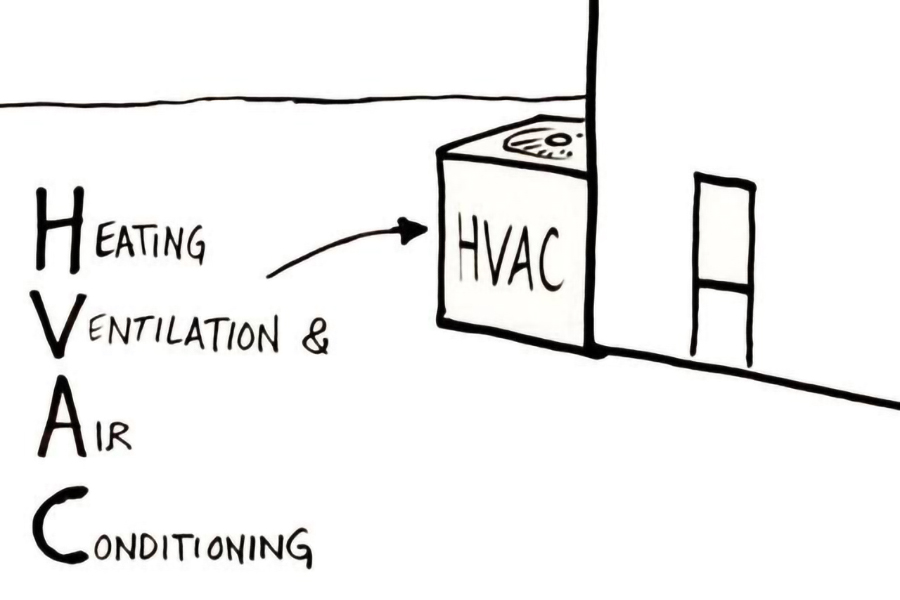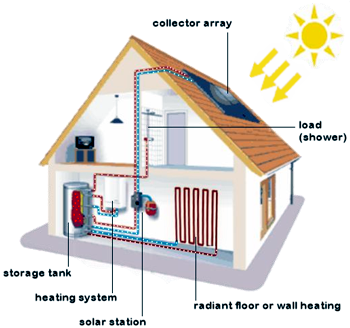
07 Feb What is HVAC? Structure, operating principle of the HVAC system
What is HVAC? Structure, operating principle of HVAC system? Application of HVAC in life? Let’s go through the details of this article of Greentec industrial ceiling fan
Nội dung bài viết
HVAC
What is HVAC?

HVAC stands for Heating, Ventilating and Air Conditioning, collectively known as air conditioning systems.
-Heating: Heating
-Ventilation: Ventilation
– Air Condition: Air conditioner
HVAC is a system to control temperature, humidity and air quality in indoor spaces or vehicles. The goal of an HVAC system is to provide an acceptable level of indoor air quality and thermal comfort. The design of the system is based on the principles of heat transfer, thermodynamics and fluid mechanics.
Some variants may include other aspects:
– HVAC & R or HVACR – ‘R’: is used to indicate that the system includes refrigeration
– HVACR: These are systems including refrigeration but not ventilation
History of HVAC
The air conditioning system was first designed in 1902 by Alfred Wolff. At the same time, Willis Carrier designed the printing company Sacketts-Wilhems AC (Air-Conditioning) system.
Later, HVAC was invented and improved by Nikolay Lvov, Michael Faraday, Willis, Edwin Ruud, Reuben Trane, James Joule, William Rankine, Sadi Carnot and many others.
Coyne College was the first school to train HVAC in 1890.
Application of HVAC system
Today, HVAC is widely applied in our daily lives such as applications in air conditioning and ventilation systems in high-rise buildings, commercial centers, … Heavy industries such as power plants, airplanes, spacecraft, ….
Structure and operating principles of the HVAC system
Heating

Heating systems are devices that aim to generate a higher amount of heat than the (warm) ambient temperature for the space. Heat generation is done by central heating.
Devices that make up a complete heating system include:
-Vaporator, heat pump: This device is used to heat water, steam, air in central position.
– Heat is transmitted by convection, transmitted by radiation.
Fireplaces are operated through different fuel sources such as solid fuel (coal, firewood ..), liquid fuel (gasoline, oil ..), gas (gas …), electric fuel. Electric heaters are often used as backup heat or heat pump systems.
Heat pumps were popularly used in Japan and the United States in the 1950s.
Ventilation
People always want the best air quality to ensure the safety of health. In the current period, when the process of industrialization and modernization takes place like a “rush”. The birth of many industrial plants, means of transportation … Dragging the exhaust gas into the human environment. They have serious consequences for the quality of life.
The ventilation system will contribute to air change. By controlling environmental factors such as temperature, humidity or eliminating odor, smoke, dirt, bacteria, CO2 to increase the oxygen content in the air.
In addition, ventilation is the circulation of air between the outside and the inside of the building.
Principle of operation:
– Air handling unit (AHU) has the function of providing air and controlling air quality from outside.
– Excessive moisture, odors and environmental pollutants, when added, will be diluted or replaced with air from the outside.
In apartments, kitchen or bathroom locations are often equipped with duct systems to guide odors or moisture.
Methods of ventilation:
– Natural method: A method of circulating outside air without using ventilation fans, or other mechanical systems. Air is passed through windows, small vents. Some buildings use a “stack effect” to get the best amount of air from outside. This method takes very little energy so the air quality may not be as expected.
– Artificial method (ventilation by exhaust fans): This method uses ventilation fans, ducts, controllers to control the quality of air flowing into the building.
Watch now: What is ventilation?
Why ventilation is so important
Air Condition

Principle of operation:
Taking cold air:
– The temperature in the air will be removed by the air conditioning system with refrigerants such as: Water, air, ice, chemicals …
– The removal of heat takes place through radiation, convection or transmission. When warm temperatures are needed: The cooling system will use reversing valves.
Switch from cooling to heating by reversing the flow of refrigerant.
The cycle of the HVAC system
– Supply Air: Supply air, here includes cold air and hot air.
– Return Air: Bring air through.
– Exhaust Air: Exhausting the clean airflow to the outside, usually in the toilet.
Function of HVAC system
Heating, ventilation, and air conditioning are inextricably linked. They are an indispensable structure in a project. The HVAC system has an important function: To provide the best air quality to humans under any environmental conditions.
Above we have come together to learn about the HVAC system. Hope through this article we understand more about the HVAC system.



No Comments